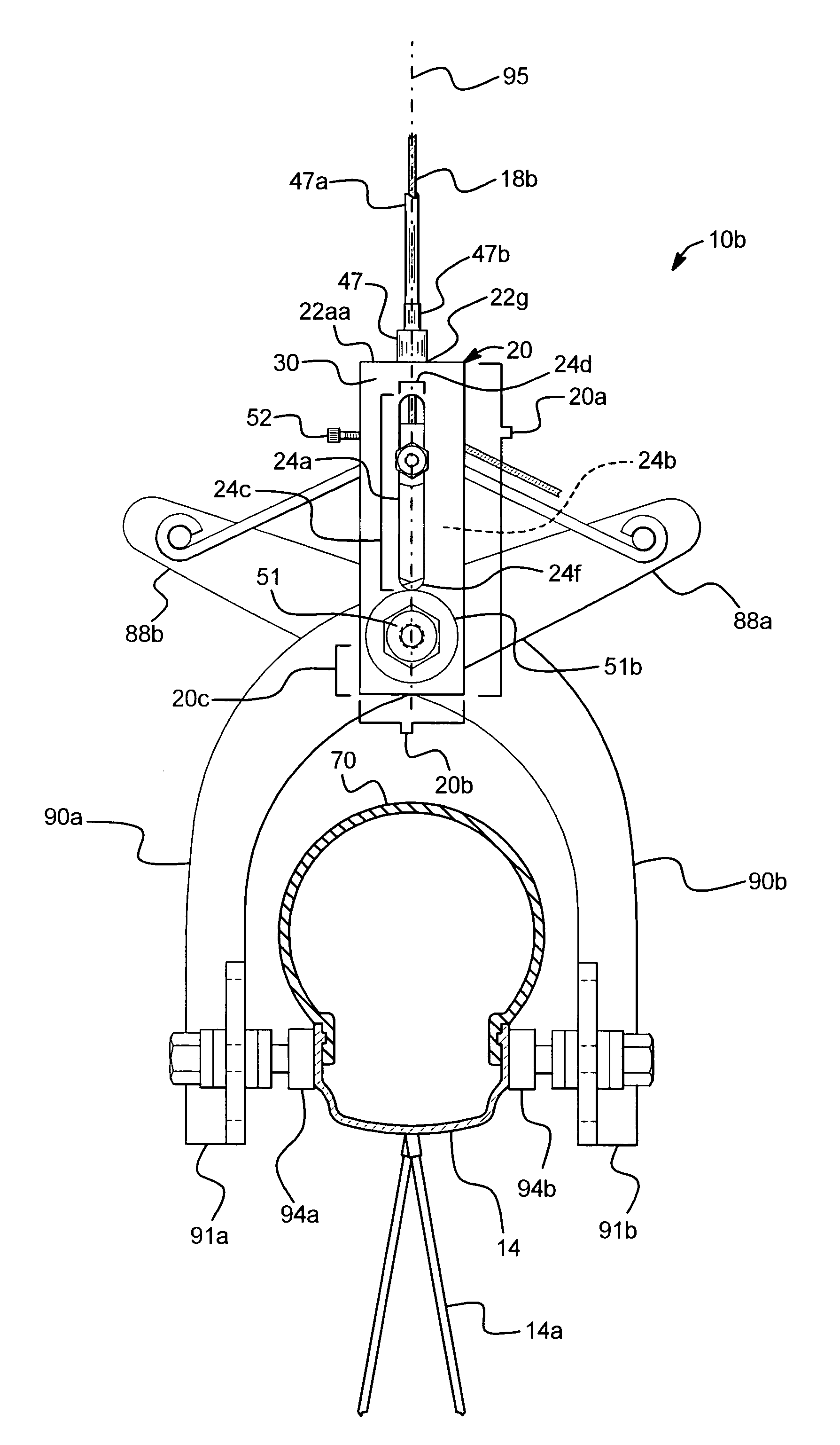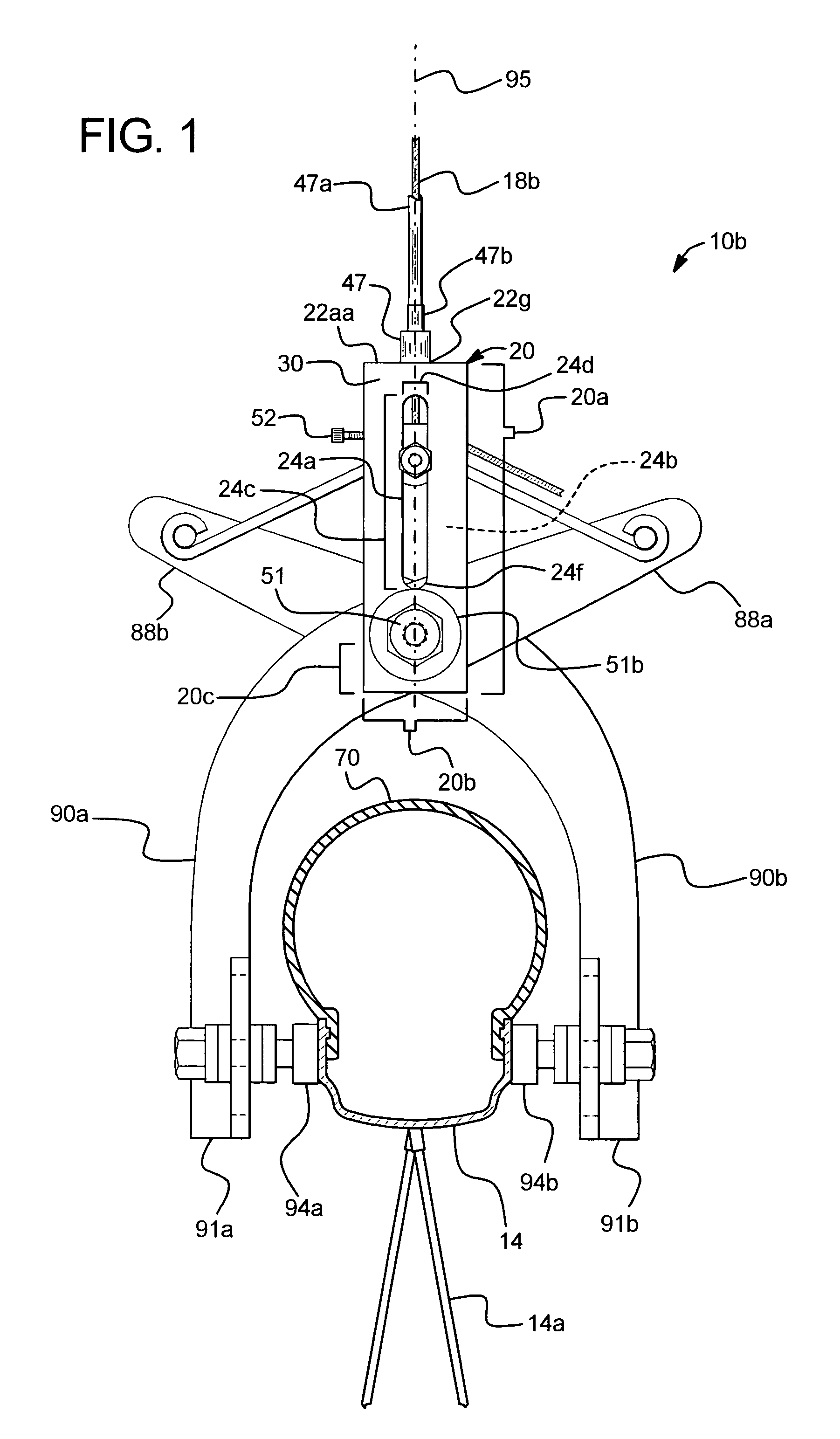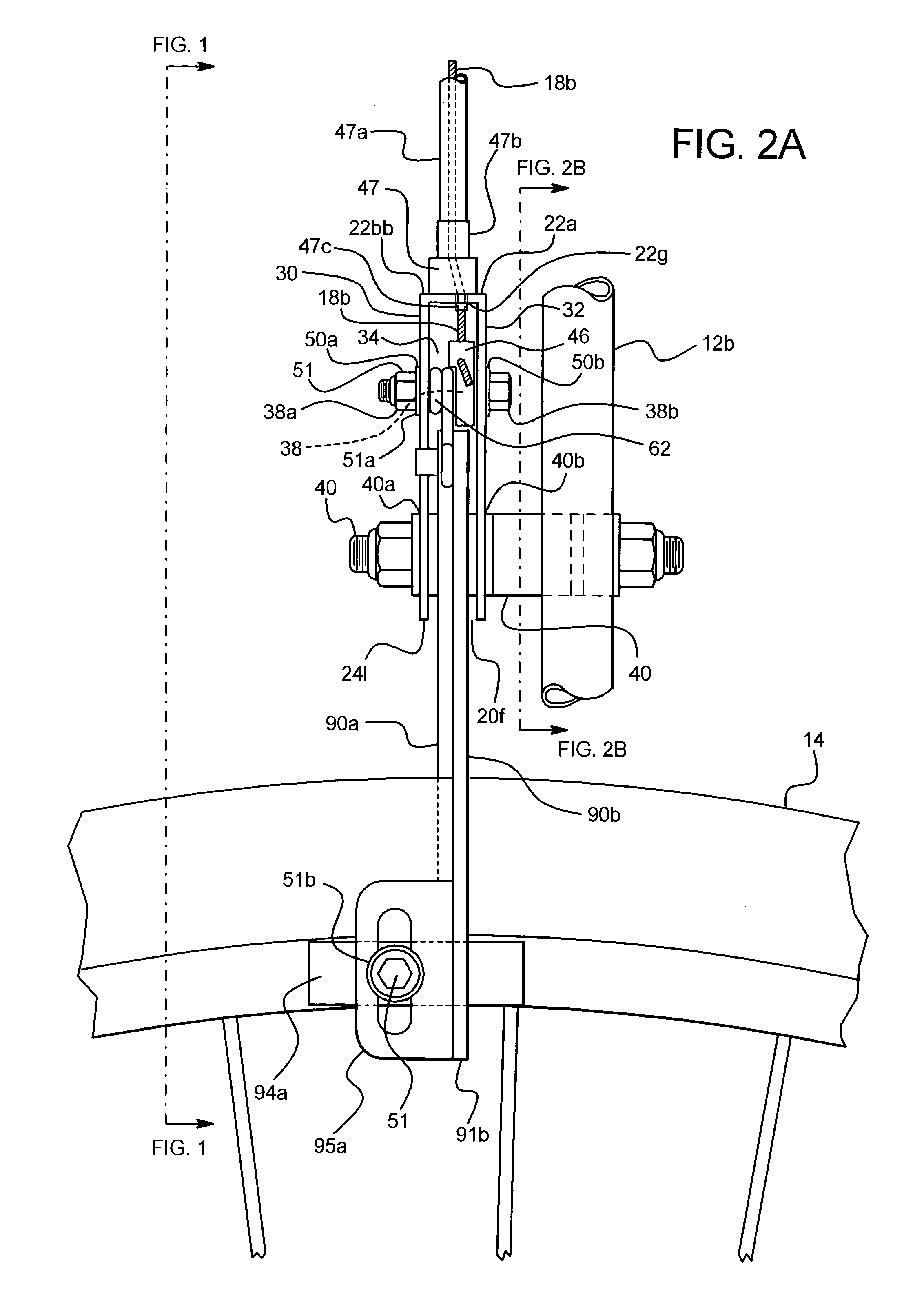Self-adjusting bicycle brake assembly
a bicycle and self-adjusting technology, applied in the direction of cycle brakes, braking elements, cycle equipment, etc., can solve the problems of increasing friction and additional work, dragging against the bicycle rim, and many existing bicycles without effective anti-lock capability, etc., to achieve the effect of minimizing brake damage, facilitating adjusting to other bicycle brakes, and facilitating modification of the stopping parameters of the brake assembly
- Summary
- Abstract
- Description
- Claims
- Application Information
AI Technical Summary
Benefits of technology
Problems solved by technology
Method used
Image
Examples
Embodiment Construction
[0042]Brake arms of a bicycle brake assembly can be cantilevers or calipers. Brake arms can also comprise other varieties of pivoting or flexing bilateral devices which contain perpendicularly aligned components, often referred to as “brake shoes.” Upon receiving force from other brake components, brake shoes move towards the bicycle rim and press upon it, thereby halting movement of the bicycle wheel.
Brake Assembly 10 in the Preferred Embodiment
[0043]In the preferred embodiment, brake arms comprise calipers 90a, 90b, infra. Referring initially to FIG. 3, anterior bicycle brake assembly 10a [‘anterior assembly 10a’] is located anterior to anterior bicycle fork 12a. Anterior assembly 10a attaches to anterior bicycle fork 12a by anterior bracket 13a (not seen). Anterior assembly 10a attaches to anterior handlebar lever 95a by anterior bicycle cable 18a.
[0044]Still referring to FIG. 3, posterior bicycle brake assembly 10b [‘posterior assembly 10b’] is located posterior to bicycle seat...
PUM
 Login to View More
Login to View More Abstract
Description
Claims
Application Information
 Login to View More
Login to View More - R&D
- Intellectual Property
- Life Sciences
- Materials
- Tech Scout
- Unparalleled Data Quality
- Higher Quality Content
- 60% Fewer Hallucinations
Browse by: Latest US Patents, China's latest patents, Technical Efficacy Thesaurus, Application Domain, Technology Topic, Popular Technical Reports.
© 2025 PatSnap. All rights reserved.Legal|Privacy policy|Modern Slavery Act Transparency Statement|Sitemap|About US| Contact US: help@patsnap.com



